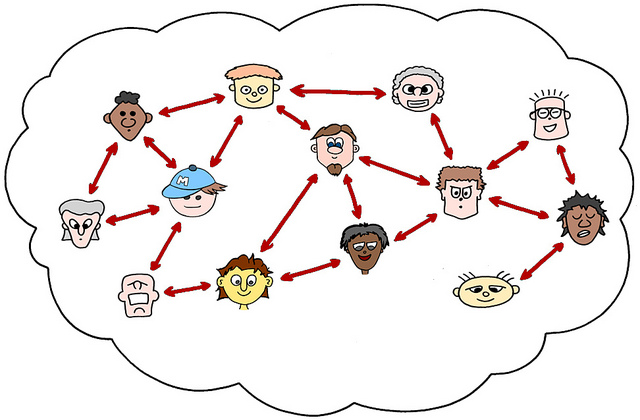Liberation and Self-Organization for Social Change and Life
April 4, 2017 2 Comments“You’ve got to keep asserting the complexity and the originality of life, and the multiplicity of it, and the facets of it.”
– Toni Morrison

Once again, I’ve been re-reading Niels Pfleaging’s short book Organize for Complexity (and eager for the release of the English version of Complexitools) amidst the growing demand we are hearing at IISC from people who want to liberate their organizations and themselves to be able to intelligently respond to change and to come back to life! Here’s the gist – as things shift more, and more rapidly, some people’s inclination may be to try to exert greater control or dig in to what is familiar, but does not work. The more one does so, the worse things can get. As Pfleaging writes, we see a “high price for the illusion of control.” Within organizations this takes the form of various gaps – social, functional, and temporal – that make them increasingly irrelevant, ineffective and irresponsible.
Responding to complexity requires (to borrow a phrase from Eugene Eric Kim) new muscles and mindsets.
If I could summarize my own reading of Pflaegings’s book, I would put it this way – the world we are living into requires more integrated ways of seeing and doing, and this is hard to do (if not impossible) if people maintain highly fractured and differentiated ways of organizing themselves. There is really a baseline call for self-awareness and mindfulness so that one is able to respond not by default or fear (of the unknown), but with perspective and intention, which connects to the idea of “strengthening the network within” at different levels. And it is important to reach out and connect this self-awareness to others . . .
“Problem-solving in a life-less system is about instruction. Problem-solving in a living system is about communication.”
-Niels Pflaeging
Throughout his book, Pflaeging notes that in all formal organizations there are informal structures, and that these are often the life blood of those organisms. They are what contribute in big ways to creating value and being more intelligently responsive to needs and opportunities beyond the organization. Yet formalized structures often stand, by intention or by accident, as barriers to these informal structures. When things are complex (constantly changing/dynamic, uncertain, volatile), it can be helpful to connect the organism to more of itself so that people are better able to make sense of what is happening. This can sometimes mean getting out of the way of informal structures and natural self-organizing tendencies, or creating spaces for informal sharing and connecting.
“Self-organization in complex systems is natural. Having “a leader” is not.”
-Niels Pflaeging

Image from Jurgen Appelo, shared under terms of Creative Commons Attribution 2.0 license.
Whether organizations are at the beginning or in the middle of a change effort, there are threats of being pulled to the overly formalized, bureaucratic and centralized side of things. Pflaeging echoes others (including Mila Baker, Carol Sanford, and Frederic Laloux) in some of his recommendations for people keeping eyes on and supporting the less formalized and life-affirming prize. These can be of great support generally-speaking in encouraging networked ways of working.
- Let purpose [not incentives] drive behavior.
- Cultivate [guiding] principles, not rules.
- Emphasize roles, not [fixed] positions.
- Support and practice maximum sharing and transparency.
- Encourage informal knowledge forums, guilds, communities of practice.
- Decentralize, rather than delegate, decision-making (delegation still smacks of hierarchy).
- Listen and look for where the life is in your organization, how it wants to organize and express itself.
This kind of work may be more difficult and there are those who might question its effectiveness and efficiency. But this is very much what in alignment with what living systems do to adapt and evolve.

2 Comments
I recently discovered IISC and find great value in your writings. Another “context” I have been exploring for new, healthier ways of organizing is the digital world, another complex system. In this world, organizational boundaries have less meaning. Openness is key to advancing knowledge and innovation. Co-creating value with different partners (including end users) is paramount and made feasible by the inherent nature of designing digital objects. Protocols and standards provide guidance for network participants, kind of like values and principles in human systems. Would love to explore this further with you and especially its relevance to social interactivity and purpose driven work.
Thanks, Wendy. I would like to follow up with you on this. Quite timely given some conversations I’m having with sustainable food system groups about leveraging both in-person and digital engagement for social learning/adaptation/resilience. It would be great to hear more specifics about the “protocols and standards” that provide governance for network participants. What does that look like in your practice? Feel free to reach out – cogden@interactioninstitute.org.